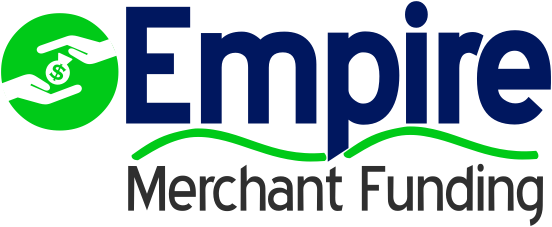Top Lines of Credit: Getting the Right One
If you’re looking for a line of credit, then you need to find the right one. There are many options available and while some offer better rates than others, there is no “one size fits all” when it comes to lines of credit. In this blog post, we will go over what you should consider when looking for a line of credit and how your budget can impact your decision on which one is best for you.
What to do first
Once you’ve figured out your budget, it’s time to apply! You should always do this online or through an app rather than in person because it can take all day if you have to go into the office and meet with someone face-to-face which isn’t worth their time or yours when there are so many other ways that lenders will approve loans these days.
Applications also usually only require basic information such as your name, address, etc., but don’t forget to include any additional income sources (i.e. spouse) since this may impact how much money they’ll lend out based on both of your budgets combined together instead of just using what is under yourself alone. This way you can get a better idea of how much money you can potentially borrow.
After applying online or through an app, the lender will go over your application and let you know if they have approved it or denied it within a few hours to a couple of days depending on what type of company they are. If this is something that interests you then continue reading more about credit lines in our blog! And don’t forget to check out other products from us such as payday loans which could help with consolidating debt into one easy loan process for those who qualify!
We’ll be going over some of the top lines of credit, who they work best for, and what kind of information you need to apply.
Kinds of Credit Lines
1. Unsecured Credit Lines – With an unsecured line of credit there is no collateral needed if a borrower were to default on their loan which makes them great for those with low credit scores or any other cases where someone may not want security tied into this type of contract such as home equity loans etc. Many people think that just because it’s called a “line” then they can borrow whatever amount they want from it but instead lenders have put in place limits based on income so borrowers don’t abuse these types of accounts by charging too much money onto them since interest rates are typically lower than most other forms.
2. Secured Credit Lines – If you own a property or vehicle that is worth more than what you owe on it then this could be an option for you. The way this work is the borrower places their asset up as collateral which means if they defaulted on their loan, the lender would have legal ownership over whatever was being used to secure the debt but at least borrowers can know that interest rates will typically be lower since there isn’t any risk of losing anything in case of a default.
3. Peer to Peer Lending – These are becoming increasingly popular because lenders from all around the country fund them so even though someone may not fit into either category above, they might still qualify for one depending on where they live and who has funded it. This is basically the same as receiving a loan from your bank except you may have better interest rates and could receive the money faster depending on how fast lenders are willing to fund them.
4. Credit Cards – If someone has good credit then this might be an option for them if they want something with revolving (meaning there isn’t an end date associated with paying off their debt) amounts that can be used anywhere rather than just at one specific retailer etc. It’s important not to use too much of these because, unlike other lines, however, it will impact your credit score negatively which means higher costs in both interest and finance charges down the road if you’re unable to pay off what you owe by each month’s due date!
5. Personal Loans – These types of loans are great if you need to borrow a specific amount and don’t want to use your credit card in case there is an emergency etc. They typically have larger interest rates than lines of credit, but the repayment terms tend to be longer so that helps with paying them off each month which could help reduce how much money is owed overall since it will take longer before they start accumulating additional finance charges because not all lenders offer this type of account!
6. Home Equity Loans/Lines – This works similar to secured lines except these types can provide more benefits such as low or no closing costs when qualifying for one, unlike unsecured lines where borrowers may pay hundreds just for applying and receiving fewer benefits (i.e. lower interest rates) compared to these types. This depends on the bank but typically borrowers can also use this type of loan to consolidate other debt into one easy monthly payment, pay for anything they want (home repairs, etc.), or even purchase another property if they wanted to do that instead!
7. Tax Liens – For those who are self-employed and haven’t filed their taxes yet because there is no money left over after paying expenses will likely need help with receiving additional cash fast until you’re able to file them at which point the lien could be removed by your lender so it’s important not to borrow too much from tax liens since interest rates tend to be higher than most lines of credit out there since lenders know people usually won’t default unless there really isn’t any money left to pay!
8. Cash-Out Refinance – If you have a home equity loan or line of credit, this is when you take out the remaining balance in cash so it can be used for anything. The benefit here though is that interest rates are typically lower than traditional types of loans since lenders don’t need an asset to secure them but they’re only available if homeowners have already paid off most of their debt on their property through lines/home equity loans etc. This process may also require borrowers to receive approval from the Federal Housing Authority which means getting additional paperwork filled out and submitting it with your application in order to qualify too!
9. SBA Loans – These types are backed by government agencies like FHA’s do however these ones are specifically for small businesses! If you’re trying to get a startup business off the ground or might need extra cash for an existing one, then these types are great options. You can also choose between short-term and long-term ones which are nice if it’s what you prefer but they typically have lower interest rates than most lines of credit mentioned in this blog post so that means having to pay less money overall when making payments back each month too!
10. Cash Advances – This works similar to how payday loans work where borrowers receive their requested amount instantly however there isn’t any sort of repayment plan associated with them, unlike personal loans since lenders know they will be repaid immediately once your next paycheck arrives, etc. It’s important not to borrow more than needed though because again, interest rates are typically higher than most so that means paying more in the long run if you take out too much cash! Interest can also be capitalized or added to your balance which just means additional finance charges will accumulate each month until it’s paid off.
11. Personal Loans – These types of loans are great if you need to borrow a specific amount and don’t want to use a credit card since there might be an emergency etc. They typically have larger interest rates compared with lines of credit, but repayment terms tend to be longer so helps reduce money owed overall because it would take longer before accumulating finance charges because not all lenders offer this type of account!
We hope this article has helped you learn about the top lines of credit and what they entail. If you have any questions, please feel free to reach out to us via email or phone at your convenience.
t your convenience.




